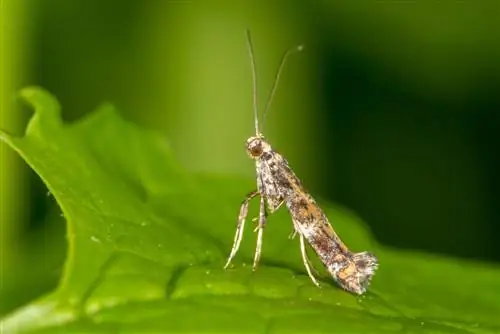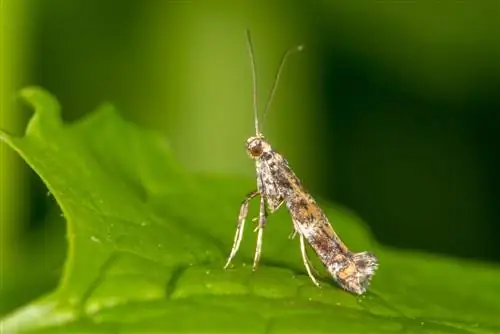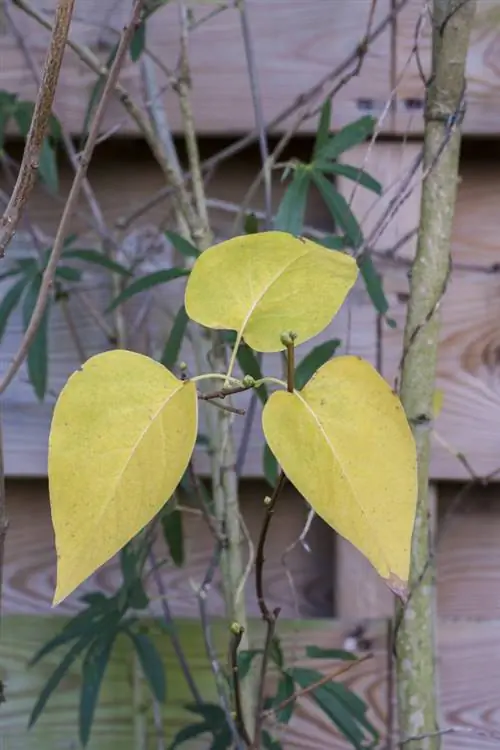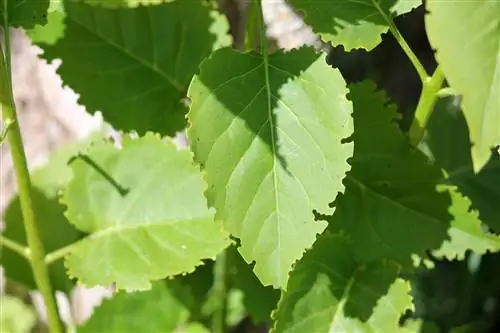- Author admin [email protected].
- Public 2023-12-16 16:46.
- Last modified 2025-01-23 11:21.
Even though the popular ornamental shrub lilac is considered resilient and robust, it is not immune to diseases and pests. Especially if brown spots appear on the lilac leaves, you should first think about a pest infestation and check the bush for it. You can find out which pests are particularly common on lilacs and what you can do about them in this clear summary.

Which pests can attack lilacs?
The most common pests on lilacs are the lilac leaf miner (Gracillaria syringella), the lilac leaf weevil (Otiorhynchus rotundatus), hornets (Vespa crabro) and gall mites (Eriophyes loewi). To combat it, we recommend collection, neem applications or shoot spraying.
Lilac leafminer, leafminer or lilac moth (Gracillaria syringella)
The leaf miner is an inconspicuous, small butterfly whose pupae overwinter directly on the lilac. The larvae finally hatch in May and feed primarily on the leaves. They are also rarely found in the soft shoot axes. Leaf miners are not only very common on lilacs, although the first generation usually leaves little damage behind.
- Symptoms: olive-brown spots on leaves, dying and browning leaf areas, destroyed leaf tissue, yellowish larvae in the leaves
- Control: normally not necessary, spraying when budding
Lilac leaf weevil, black weevil (Otiorhynchus rotundatus)
This is a reddish-brown beetle up to six millimeters long that only eats at night and spends the day under leaves and other hiding places on the ground. Its larvae also live in the soil and can severely damage the roots due to their hunger. An infestation can only be determined using tricks: Place a clay pot filled with wood shavings under the lilac, the black weevils will use this as a hiding place and you can collect them.
- Symptoms: eroded leaf edges
- Combat: collection, if the infestation is severe, treatment with neem is possible, use of nematodes such as roundworms of the genus Heterorhabditis
Hornets (Vespa crabro)
Hornets mainly use wood or bark to build their nests, which they peel from the trees themselves - for example from lilacs.
- Symptoms: peeling or eating spots on the shoots, very rarely wilting leaves and dying branches
- Control: only useful in the case of a large-scale infestation. Hornets are protected and should therefore be left alone
Gall mites (Eriophyes loewi)
These are tiny mites, only about 0.2 to 0.5 millimeters in size, that belong to the arachnids and feed on plant juices.
- Symptoms: light green discolored leaves, thickened buds, short shoots, formation of “witches’ brooms”
- Control: remove affected leaves, spray shoots in early spring with rapeseed oil preparation (neem), loosen the root disc, plant wild garlic
Tip
If no pests can be found despite obvious damage to the lilac, in many cases there is a fungal infection behind it.






